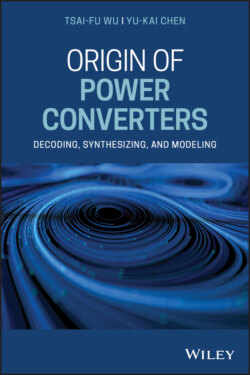Читать книгу Origin of Power Converters - Tsai-Fu Wu - Страница 29
2.1.2 Proton–Neutron–Meson Analogy
ОглавлениеThere was a legend about Dr. Hideki Yukawa who was the 1949 Nobel Prize winner in Physics area. Dr. Yukawa used to get stuck at the interaction between protons inside nuclei. Protons carrying positive charges are supposed to repel each other, but how come they stick together tightly? One day, when he walked from his home to laboratory, he found out that the two dogs used to bark each other, but today they stick to each other without barking or fighting. He was curious and walked closely to take a look, and he revealed that they were biting on the same pig's bone. Finally, he realized that the neutrons inside a nucleus play the role of pig's bone to tight protons (dogs) closely. However, if they always stick to each other, which is equivalent to a static balance, how can they interact? This became his research topic, and he figured out that there exist mesons appearing in pair (π+, π−), which govern the interactions between protons and neutrons inside nuclei. When meson π+ is in action, meson π− will be deactivated, and vice versa. In other words, when π− is in action, π+ will be deactivated.
Figure 2.1 Derivation of the original converter, buck converter, with a source–load approach.
With this understanding, derivation of the buck converter can be analogous as follows. The input voltage source and output voltage sink can be treated as two protons, as shown in Figure 2.2a, since they have the same polarity. An inductor, which looks like a rawhide bone, plays the role of a neutron to tight two voltages (similar to protons or dogs), as shown in Figure 2.2b. With this configuration, the output voltage will finally equal to the input voltage, which is a static balance, and there is no further interaction. Thus, it requires to introduce an active–passive switch pair (S1, D1), like meson pair (π+, π−), into the circuit to control power flow from the input to the output, as shown in Figure 2.2c. When switch S1 is turned on, diode D1 is in reverse bias, and on the other way, when S1 is turned off, D1 will conduct to freewheel the inductor current. The configuration and action are similar to those of the proton–neutron–meson model. Thus, the buck converter can be derived accordingly.
It can be noted that with a source–load approach, the buck converter derivation is constructed one component by one component. While, with the proton–neutron–meson approach, the active–passive switch pair is introduced to the converter at a time, like a meson pair.
